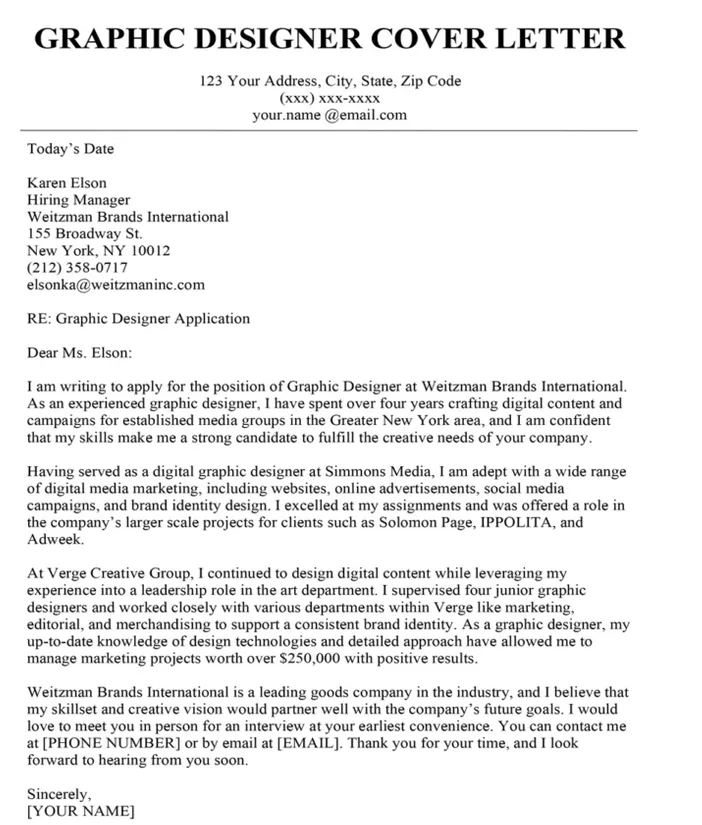Crafting a Winning Graphic Designer Cover Letter
A well-crafted cover letter is your first opportunity to impress a potential employer and secure an interview. For graphic designers, it’s especially crucial, as it provides a space to showcase not only your skills but also your personality and design aesthetic. This guide offers practical examples and advice on how to write a compelling graphic designer cover letter that stands out from the competition and significantly increases your chances of landing your dream job. We will explore essential components, common pitfalls to avoid, and best practices for creating a cover letter that effectively communicates your value as a designer.
Understanding the Purpose of a Cover Letter
The primary purpose of a cover letter is to introduce yourself and your qualifications to a potential employer. It serves as a complement to your resume, providing additional context and detail that allows you to demonstrate your personality, passion for design, and suitability for the specific role. Unlike a resume, which is a factual summary of your experience, a cover letter allows you to tell a story, explain your design philosophy, and articulate why you are the ideal candidate for the position. Think of it as a chance to make a strong first impression and persuade the hiring manager to read your resume with greater interest.
Highlighting Your Skills and Experience
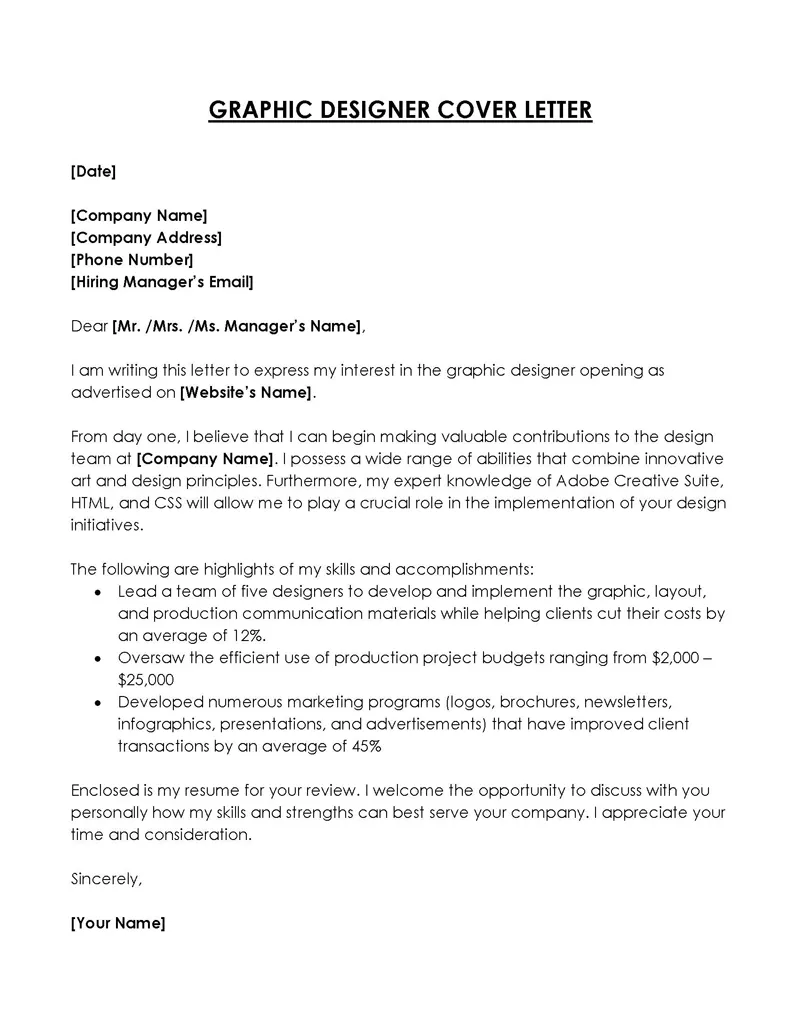
Your cover letter is the perfect place to highlight your relevant skills and experience. This is where you can showcase the specific abilities that align with the job requirements. Start by reviewing the job description carefully and identify the key skills and qualifications the employer is seeking. Then, in your cover letter, provide specific examples of how you’ve utilized those skills in past projects. Use action verbs to describe your accomplishments, quantify your results whenever possible, and provide context to help the hiring manager understand the scope and impact of your work. For example, instead of saying ‘I designed marketing materials,’ say ‘I designed a series of marketing brochures that resulted in a 15% increase in lead generation.’
Showcasing Your Design Portfolio
Your cover letter should always mention your design portfolio, which is a crucial component of your application. Include a link to your online portfolio, Behance, Dribbble, or personal website where potential employers can easily view your work. In your cover letter, give a brief overview of your portfolio and highlight some of your most relevant and impressive projects. You can also mention any awards or recognition you’ve received for your work. This ensures that the hiring manager can easily assess your design capabilities and style, helping them make an informed decision about whether you’re a good fit for the role and the company. Remember to keep your portfolio up-to-date and reflect your best work.
Key Components of a Graphic Designer Cover Letter
Header and Contact Information
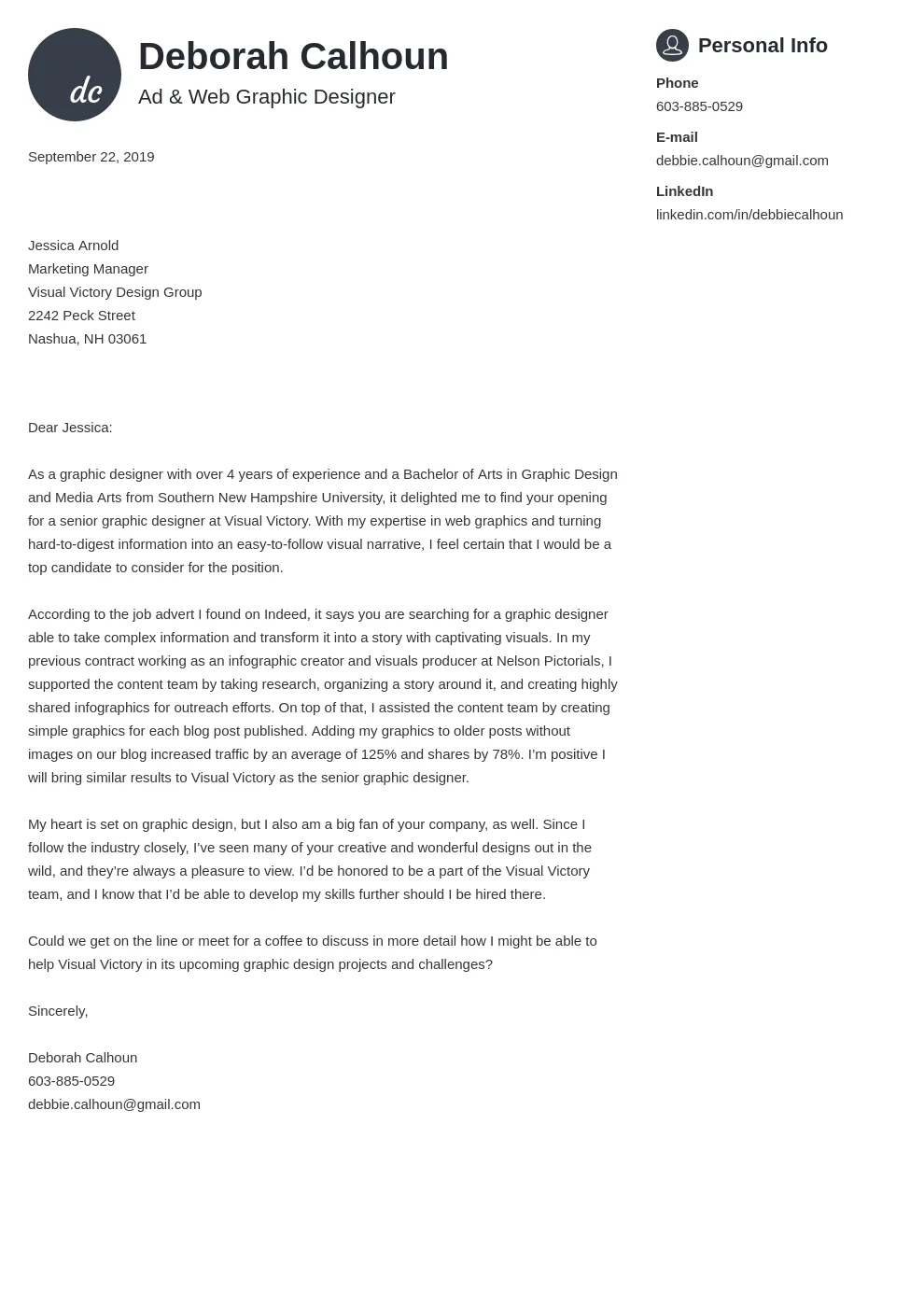
Begin your cover letter with a professional header that includes your full name, contact information (phone number and email address), and the date. If you’re sending a hard copy, include your address as well. Ensure your contact information is accurate and up-to-date. Consider including links to your online portfolio or professional social media profiles (e.g., LinkedIn). This will allow the hiring manager easy access to learn more about your background and expertise.
The Salutation
Address the hiring manager by name whenever possible. This personal touch demonstrates that you’ve taken the time to research the company and the specific role. If you are unsure of the hiring manager’s name, you can often find it on the company website or LinkedIn. If you cannot find a name, using a general greeting like ‘Dear Hiring Manager’ is acceptable. However, avoid generic greetings like ‘To Whom It May Concern,’ as this can make your letter seem impersonal.
The Opening Paragraph
Your opening paragraph should grab the reader’s attention and clearly state the purpose of your letter. Mention the specific position you’re applying for and how you learned about the opportunity. Briefly highlight your most relevant skills and experiences, demonstrating your enthusiasm for the role and the company. This is your chance to immediately capture the hiring manager’s interest and convince them to continue reading your letter. Show genuine excitement for the role and the company culture.
Body Paragraphs Highlighting Skills
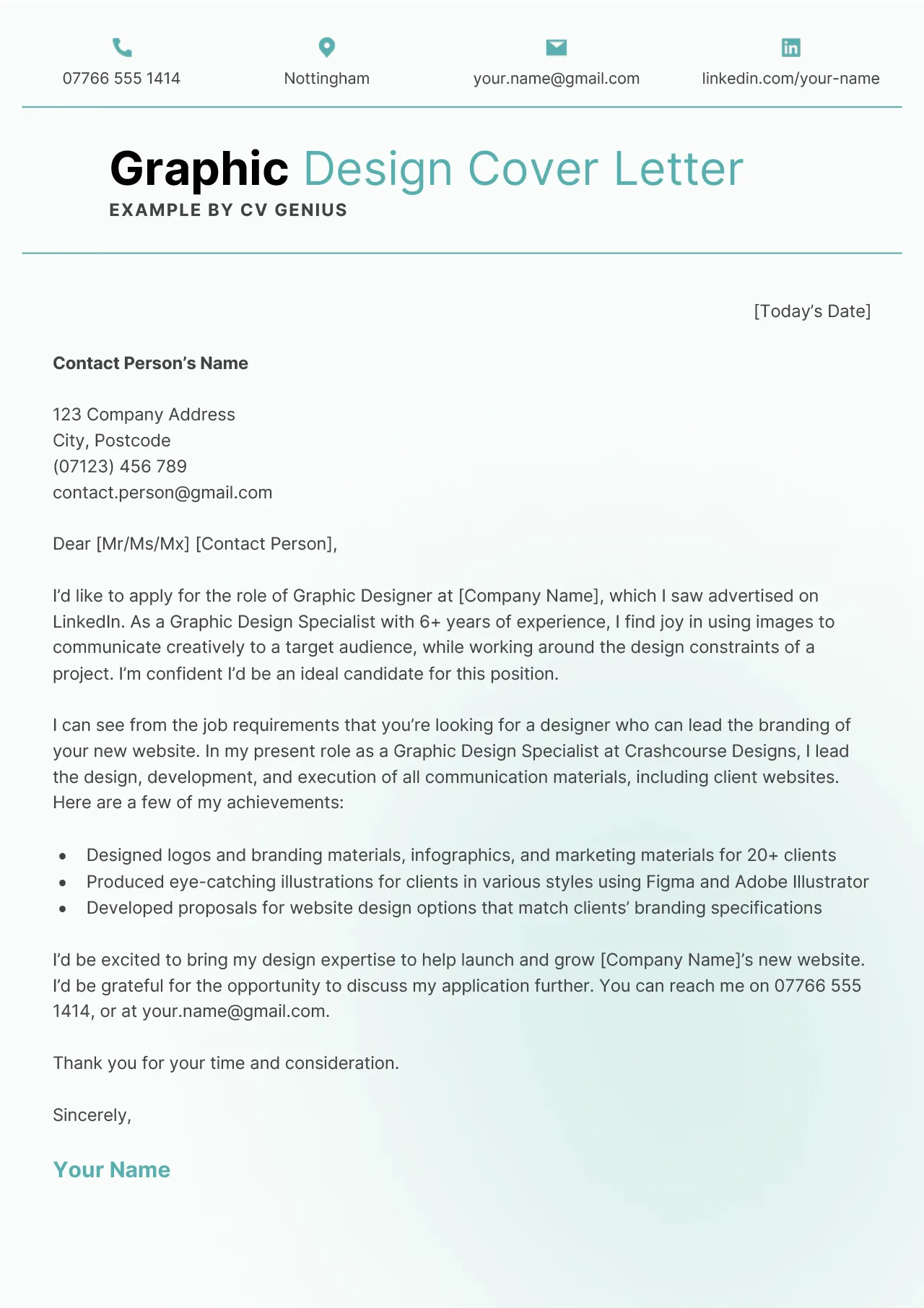
The body paragraphs are where you showcase your design skills and experience in detail. Use specific examples to illustrate how you’ve utilized your skills to achieve results in previous roles. Quantify your accomplishments whenever possible to demonstrate the impact of your work. Tailor your examples to align with the specific requirements of the job description. Ensure your writing is clear, concise, and easy to read. Use strong action verbs and avoid jargon that the hiring manager might not understand. Focus on demonstrating value and showing why you are the best candidate for the position. For example, you could showcase a project where you increased website traffic by redesigning the user interface.
Tailoring the Cover Letter to the Job Description
Every cover letter should be tailored to the specific job description. This involves carefully reviewing the job posting and identifying the key skills, experiences, and qualifications that the employer is seeking. Then, adjust your cover letter to highlight the relevant aspects of your background. Explain how your skills and experience align with the job requirements and provide concrete examples to back up your claims. Avoid using a generic cover letter that could be sent to any company. Customizing your cover letter shows the hiring manager that you have taken the time to understand the role and are genuinely interested in the opportunity.
Quantifying Your Achievements
Whenever possible, quantify your achievements with data and metrics. Instead of saying ‘I improved social media engagement,’ say ‘I increased social media engagement by 30% in six months by implementing a new content strategy.’ Use numbers to demonstrate the impact of your work and highlight your successes. This is particularly important in the design field, where tangible results can be used to measure your effectiveness. Providing quantifiable results provides concrete evidence of your skills and the value you would bring to the company.
Showcasing Your Design Software Proficiency
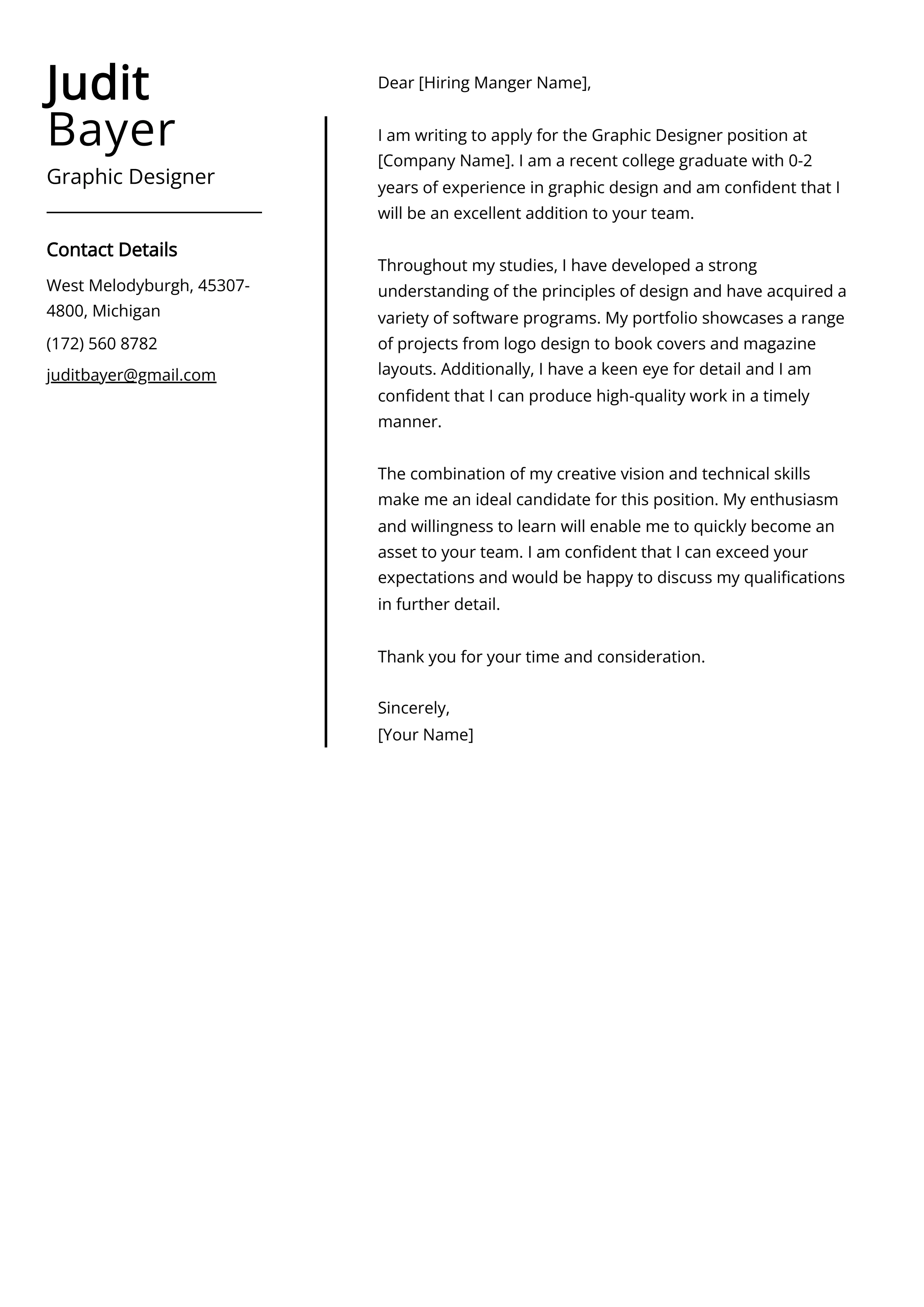
Graphic designers rely heavily on design software, so it’s essential to showcase your proficiency in the tools used by the company. List the software you are proficient in, such as Adobe Creative Suite (Photoshop, Illustrator, InDesign), Figma, Sketch, or other relevant programs. If the job description specifies particular software, make sure to mention your expertise in those tools. You can also include information on your experience with other design-related technologies or platforms, such as website design, video editing, or animation software. Be honest and avoid exaggerating your skills.
The Closing Paragraph and Call to Action
In your closing paragraph, express your enthusiasm for the opportunity and reiterate your interest in the position. Thank the hiring manager for their time and consideration. Include a call to action, such as requesting an interview or expressing your availability for a follow-up conversation. Make sure your closing is positive and professional, and proofread it carefully for any errors. This is your final chance to make a positive impression.
Common Mistakes to Avoid
Generic Cover Letters

One of the biggest mistakes is sending out generic cover letters that are not tailored to the specific job or company. Generic letters lack personalization and fail to demonstrate your genuine interest in the role. They also don’t allow you to effectively showcase how your skills and experience align with the job requirements. To avoid this, always customize your cover letter for each application, highlighting the specific skills and experiences that make you the ideal candidate for that particular position. Research the company and role to show you understand their needs and goals.
Typos and Grammatical Errors
Typos and grammatical errors can damage your credibility and make you appear unprofessional. Proofread your cover letter carefully before submitting it. Ask a friend or colleague to review your letter for any mistakes. Pay attention to sentence structure, spelling, and grammar. A well-written cover letter demonstrates your attention to detail and professionalism. Correct all grammatical errors, including punctuation and capitalization. This demonstrates your commitment to quality, a crucial quality in any graphic designer.
Lack of Personalization
Failing to personalize your cover letter is another common mistake. Avoid using generic language or phrases that could apply to any job. Instead, tailor your letter to the specific company and role. Show the hiring manager that you’ve taken the time to research the company, understand their brand, and are excited about the opportunity. Include specific examples of why you are interested in the company and how your skills and experience align with their needs. Showcasing that you’ve done your research gives you a leg up on the competition.
Formatting and Design Considerations
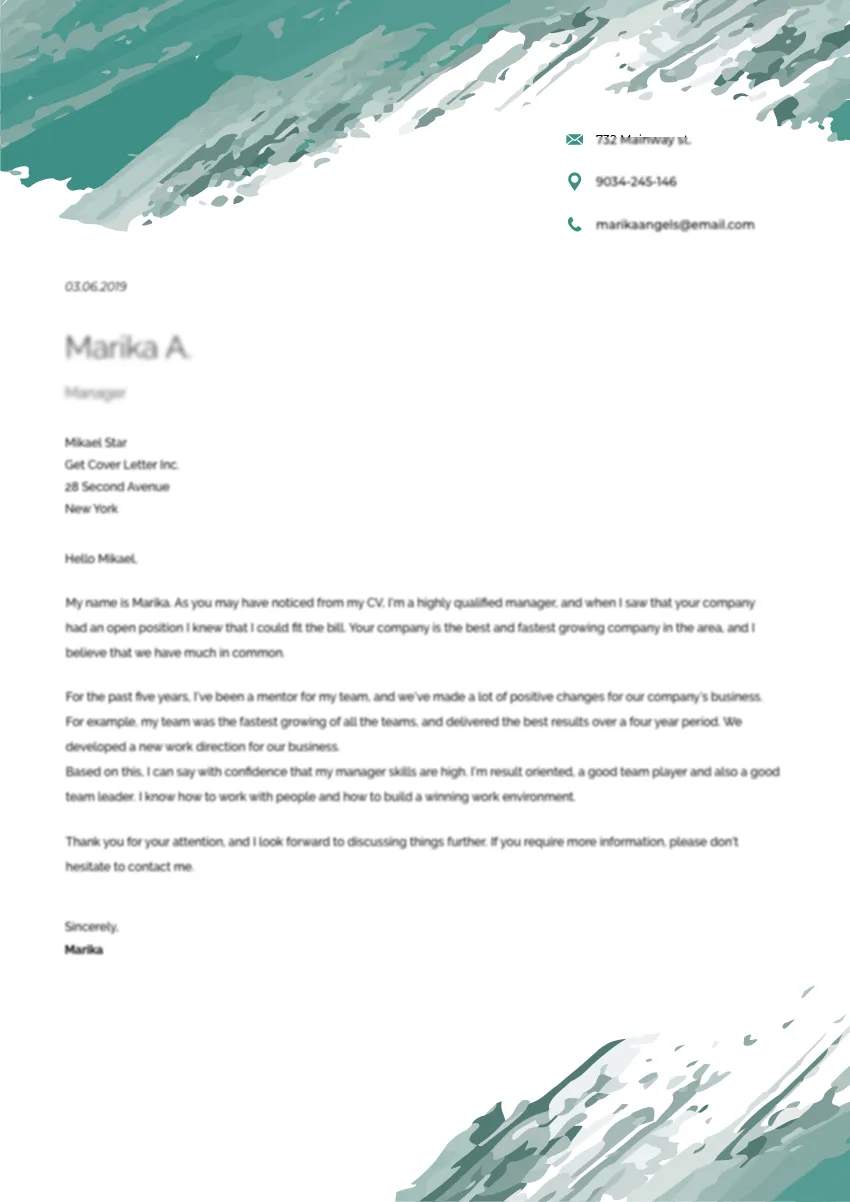
As a graphic designer, the formatting and design of your cover letter are just as important as the content. Your cover letter should reflect your design skills and attention to detail. Choose a clean and professional layout that is easy to read. Use appropriate fonts and formatting to create a visually appealing document.
Choosing the Right Font and Font Size
Select a professional and readable font, such as Arial, Calibri, or Times New Roman. Keep the font size between 10 and 12 points for easy readability. Avoid using overly decorative or unconventional fonts, as they can distract from the content. Make sure that the font is legible on all devices.
Formatting the Letter for Readability
Format your cover letter for readability. Use clear headings and subheadings to organize the content. Leave sufficient white space between paragraphs and sections. Use bullet points or numbered lists to highlight key information and make your letter easy to scan. Ensure your letter is properly aligned and doesn’t have awkward line breaks. These steps ensure that your cover letter is visually appealing and easy to read.
Optimizing for Applicant Tracking Systems (ATS)
Many companies use Applicant Tracking Systems (ATS) to screen resumes and cover letters. To ensure your cover letter is not rejected by an ATS, use a simple, clean format and avoid complex formatting. Use standard fonts and headings. Include relevant keywords from the job description throughout your letter. Save your cover letter in a common format like .doc or .pdf. These measures will improve your chances of your cover letter being read by a human reader.
